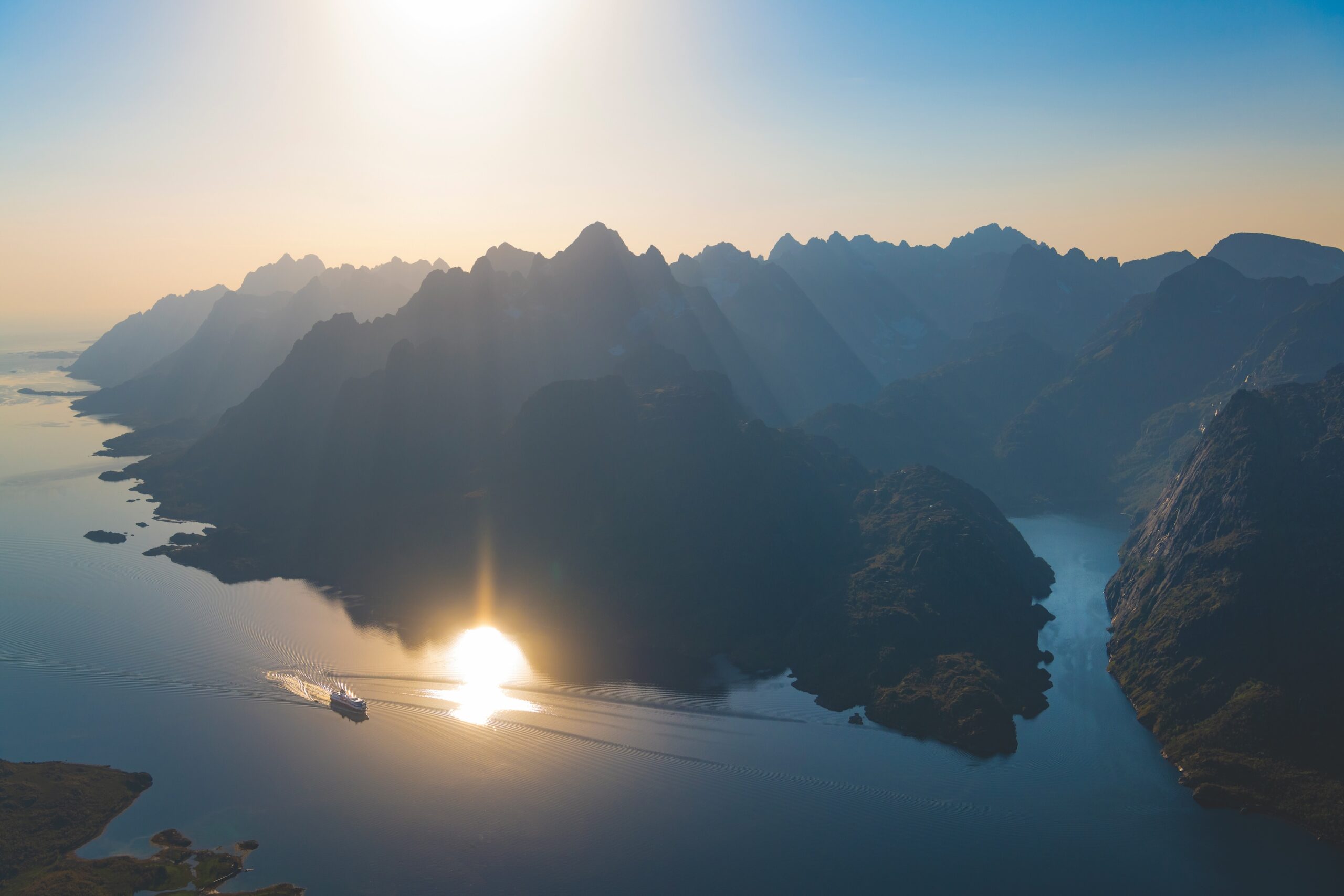NORTH STARS:
Waste Management
Certifications
Product & consumption
“The Coastal Kitchen serves meals grounded in Norwegian terroir and merroir, connecting passengers to the coastal landscapes they’re passing by just as its parent company first connected this remote stretch of shoreline“
On an 1800s farmstead on a remote Norwegian fjord, I eat an extraordinary meal. In the gentle glow of the Midnight Sun, I tuck into moose and lingonberries. Milk from goats whose young kids I fed a few hours prior. A hefty slab of halibut. Blood pancakes. Everything on my plate was grown and reared on this far-flung farm above the Arctic Circle, or sourced from the sea, forest, and land around us.
The place is Kvitnes Gård. The chef, Halvar Ellingsen. It’s the perfect introduction to what I will discover the next day aboard a red and white ship called the Nordkapp, where the traditional foodways of Norway’s wild and rugged coast meet forward-thinking sustainability and New Nordic philosophy and finesse.
Ellingsen is one of the culinary ambassadors for Hurtigruten’s Coastal Kitchen, a dining program onboard the company’s Coastal Express ships and other sailings along the Norwegian Coast. Working with 50 different food and beverage providers up and down the coast and across Norway — including farms, fisheries, aquaculture producers, cheesemakers, breweries, distilleries, bakers, and butchers — the Coastal Kitchen serves meals grounded in Norwegian terroir and merroir, connecting passengers to the coastal landscapes they’re passing by just as Hurtigruten first connected this remote stretch of shoreline.

Image courtesy of Hurtigruten.
The Norwegian Way
Hurtigruten’s ties to the Norwegian coast go way back — in fact, it’s the company’s origin story. While today it’s expanded to destinations around the globe, it started as a freight and people carrier along these very shores in the late 1800s, ferrying goods and linking remote communities along this isolated coastline of archipelagos, skerries, fjords, and sea-to-sky peaks.
Back then, for people living along this wind-and-wave-battered waterfront, local sourcing was not a culinary movement but a way of life. Fishermen preserved cod and other catches through traditional techniques like smoking, salting, and drying. Produce came from small farm plots. People lived off what the land and sea yielded.
That ethos — working with what’s available and cooking with the seasons — lives on in the Coastal Kitchen, which launched in 2022. As the ships trace their way up and down the coast, fresh supplies like seafood, cheese, bread, meat, condiments, and vegetables from the program’s food and beverage partners come aboard at different ports, transforming into “farm-to-fjord-to-fork” meals.
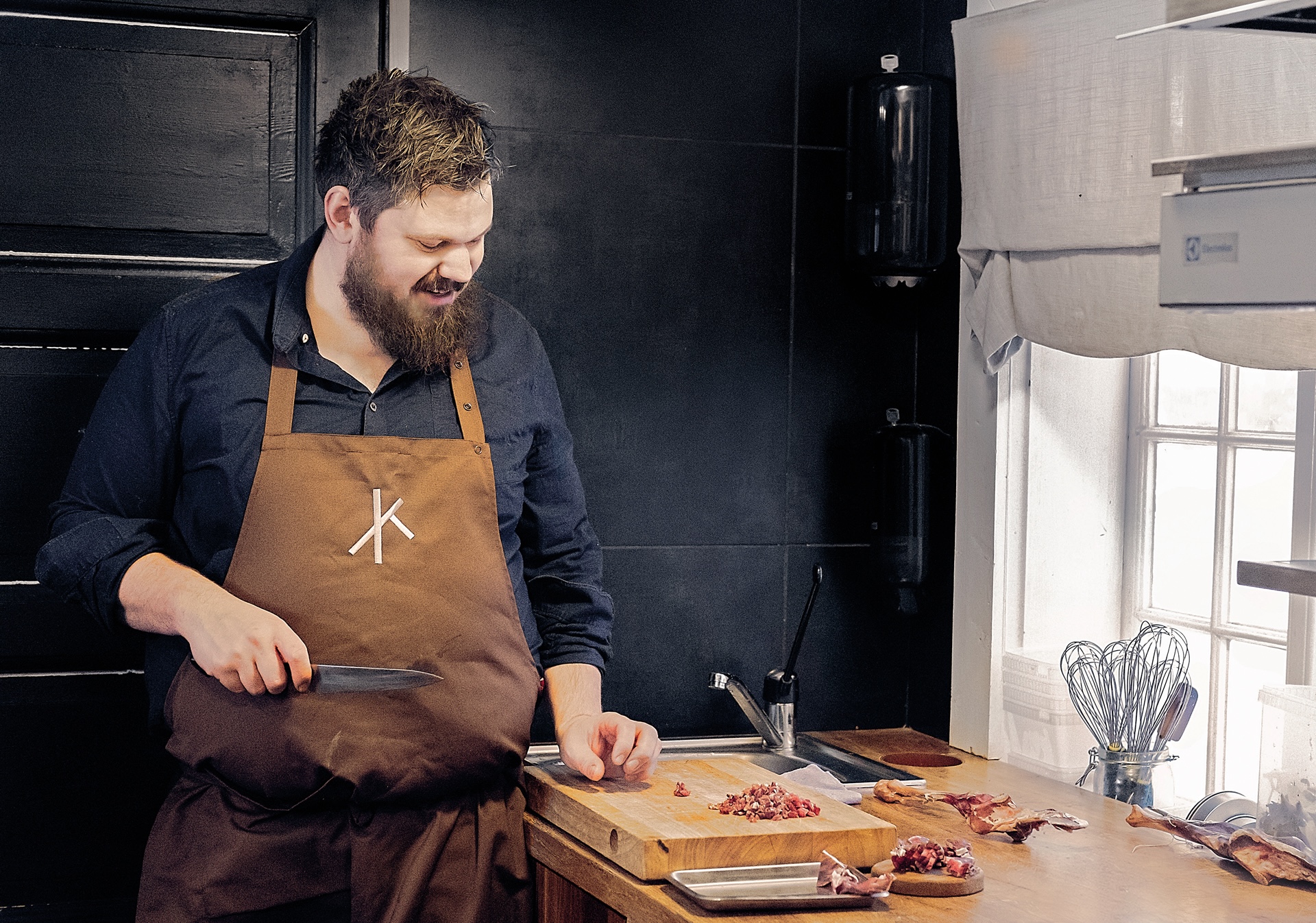
Image courtesy of Hurtigruten.
“We just do all local where we can,” says CEO Hedda Felin. “And the best of local, so not only those that can deliver huge amounts [of product]…we go to small farms.”
Sitting down in onboard bistros and restaurants with panoramic, floor-to-ceiling windows looking out onto the passing coastline, passengers sup on bacalao cod stew, seaweed soup, reindeer pizza, Lofoten lamb, Arctic berry candy, skjenning flatbreads, and more. Along with the menu, informational booklets give diners background on where their food came from, highlighting seasonal suppliers and sharing stories about how different ingredients connect to Norwegian food culture. With shore excursions to catch king crab in the Barents Sea or meet cheese-making milk goats at family farms, passengers can further discover the Coastal Kitchen program, its partners — many of which are small and family businesses — and the foodways of the Norwegian coast.
And it isn’t just the food that’s locally sourced. Passengers skål with Lofoten craft beer, spirits from Arctic distilleries, Norwegian fruit wine, and traditional aquavit made from all-Norwegian ingredients. Even drink options not directly local are approached through a sustainability lens, like working with a B Corp-certified English wine estate to develop Havets Bobler, a sparkling wine aged in the North Sea’s frigid waters.
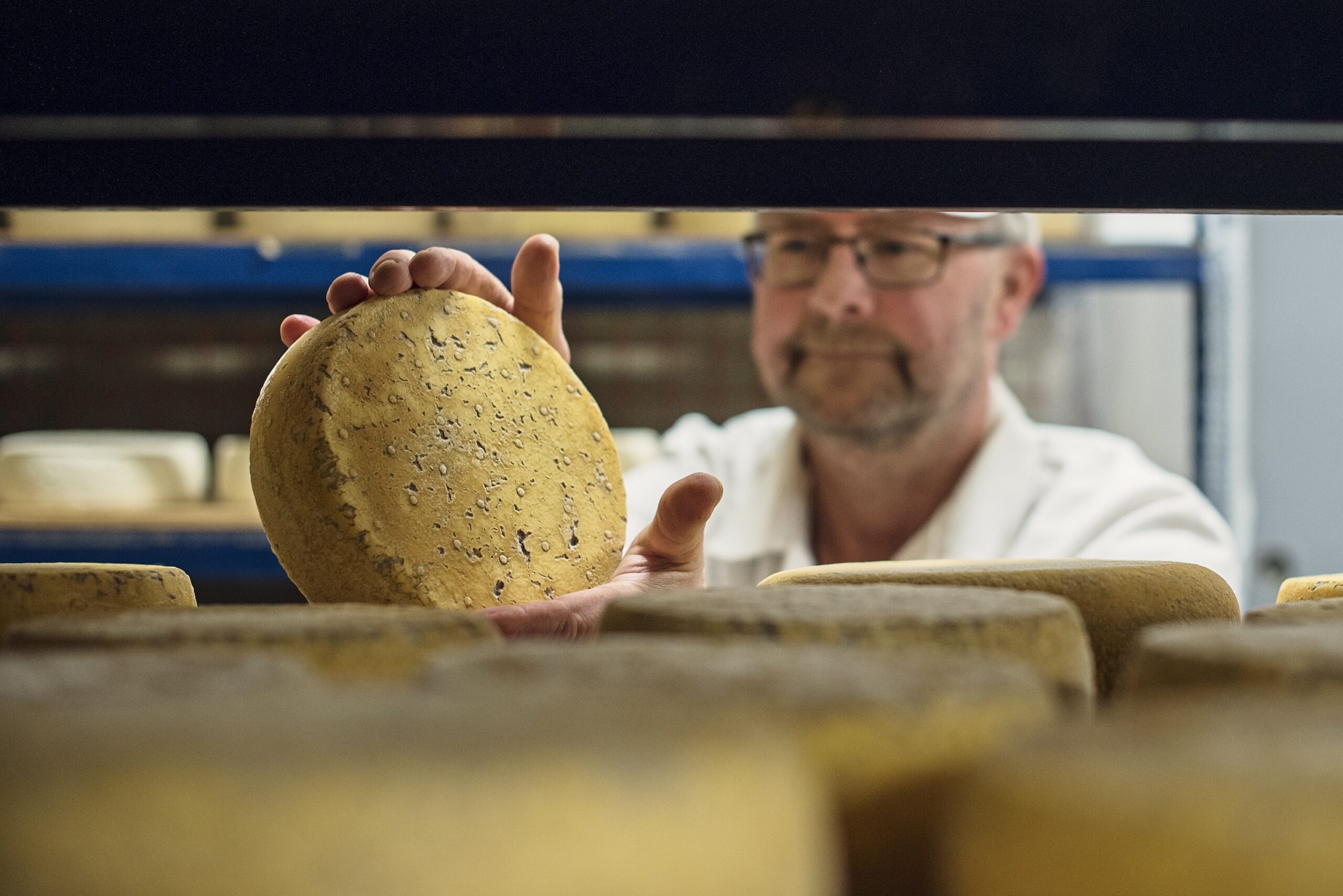
Image courtesy of Hurtigruten.
Sea changes in sustainability
The Coastal Kitchen’s mission and impact go beyond honoring the heritage, culture, and cuisine of its sailing grounds. Sourcing from where the ships sail is more sustainable by reducing the emissions and carbon footprint from food transportation. Along with Ellingsen, head chef Øistein Nilsen and fellow culinary ambassador Astrid Nässlander develop the menus and dishes, working with seasonal availability. At Hurtigruten’s port in Stamsund, a compost reactor turns leftover food waste into fertilizer for nearby Myklevik farm, helping grow vegetables and herbs that will one day wind up back on Coastal Kitchen plates.
The program also supports environmental efforts. Sea urchins pop up frequently on menus, but not just because of their coveted uni. After overfishing of urchin-eating catfish led to these spiny creatures decimating Norway’s underwater kelp forests, the Coastal Kitchen serves sea urchins to reduce the population to healthy levels and allow the kelp to regrow.
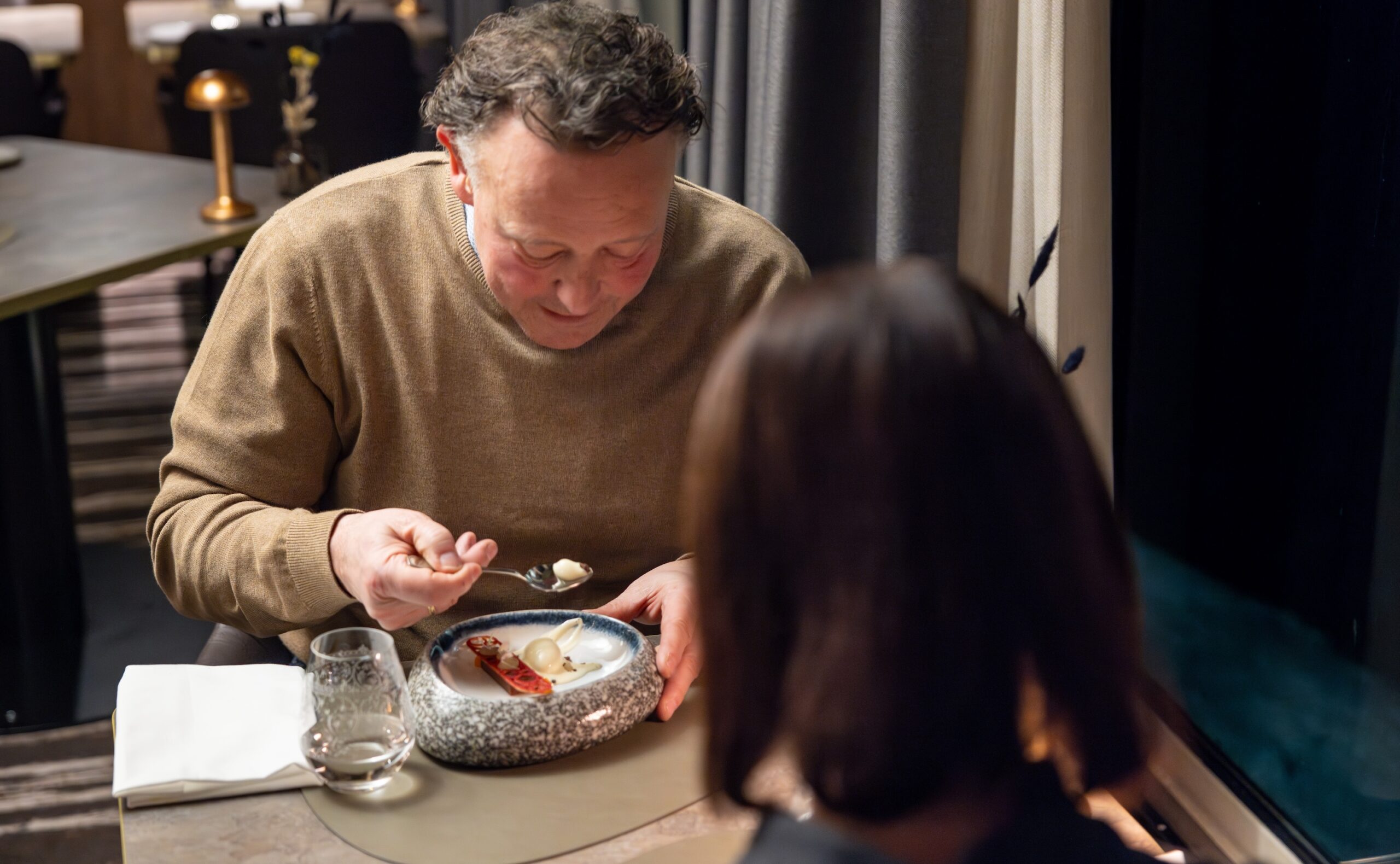
Image courtesy of Hurtigruten.
Sea kelp is another menu mainstay, with the Coastal Kitchen working with sustainable aquaculture enterprises like Lofoten Seaweed, which wild-harvests from healthy kelp forests. The Hurtigruten Foundation also supports endeavors like Tarevoktere, a group of volunteer divers that helps kelp forests recover by harvesting and removing excess sea urchins. Restoring the underwater kelp forests keeps marine ecosystems in balance and supports this vital carbon sink, which sequesters millions of tons of CO2.
Add in the economic benefits — creating jobs and supporting remote coastal communities and small businesses — and the Coastal Kitchen truly makes waves along the coast.
“It creates local ripple effects,” says Felin.
Taste the Coastal Kitchen aboard Hurtigruten’s Norwegian Coast itineraries: the classic Coastal Express route between Bergen and Kirkenes and the Svalbard Line and North Cape Line routes.
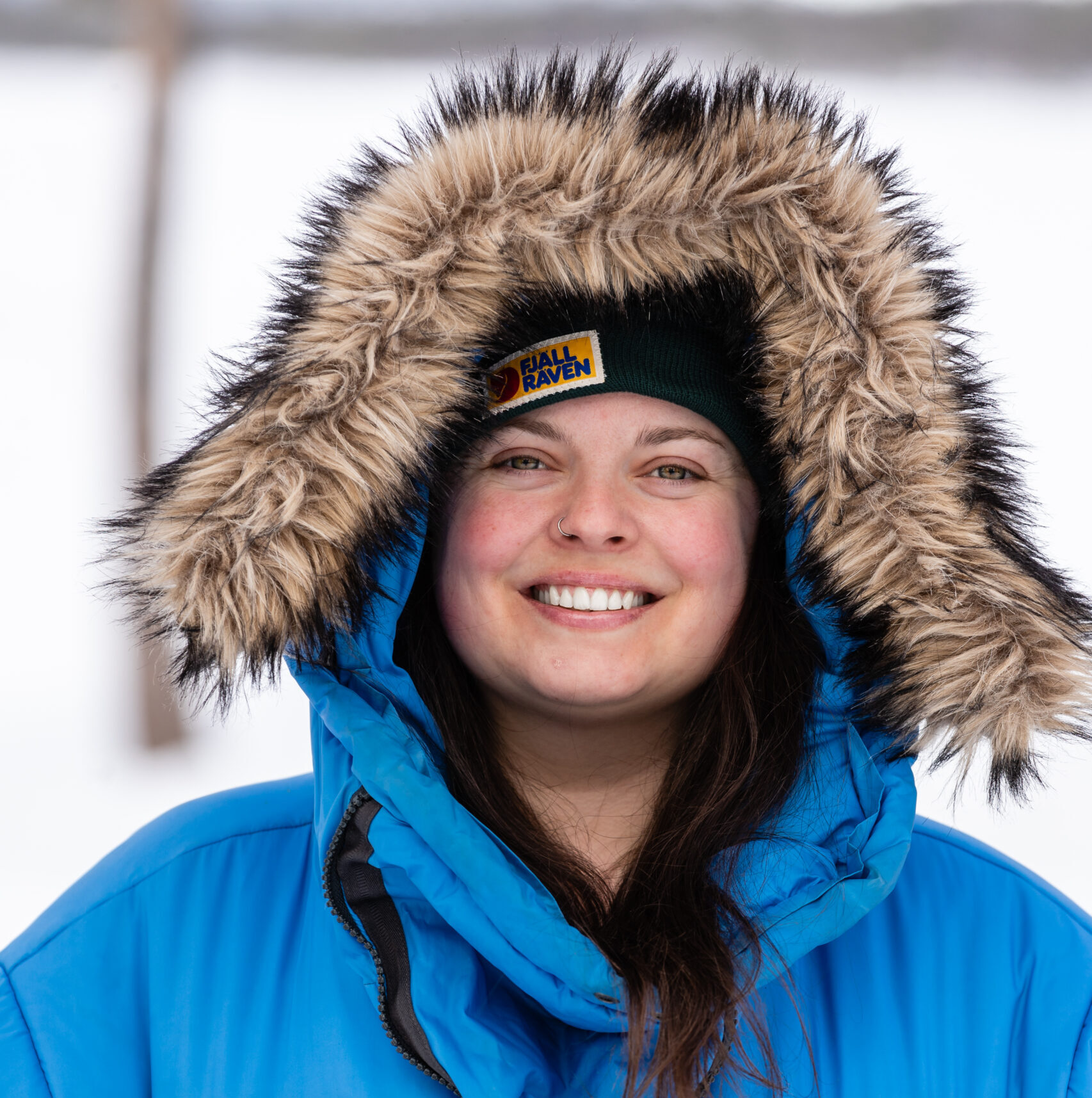
Zoe Baillargeon is an award-winning travel writer and journalist, writing about travel, food and drink, wine, wellness, culture, nature, and lifestyle for outlets like National Geographic, Travel + Leisure, Conde Nast Traveler, Wine Enthusiast, Bon Appetit, Food & Wine, and many more. Her love for adventure and trying new things has taken her all over the world from dogsledding across northern Sweden to hiking the coast of Japan to wine harvests in Oregon, with stints living in Chile where she fell in love with wine. Currently based in the Pacific Northwest, you can follow her adventures on IG at @zoebaillargeon.


